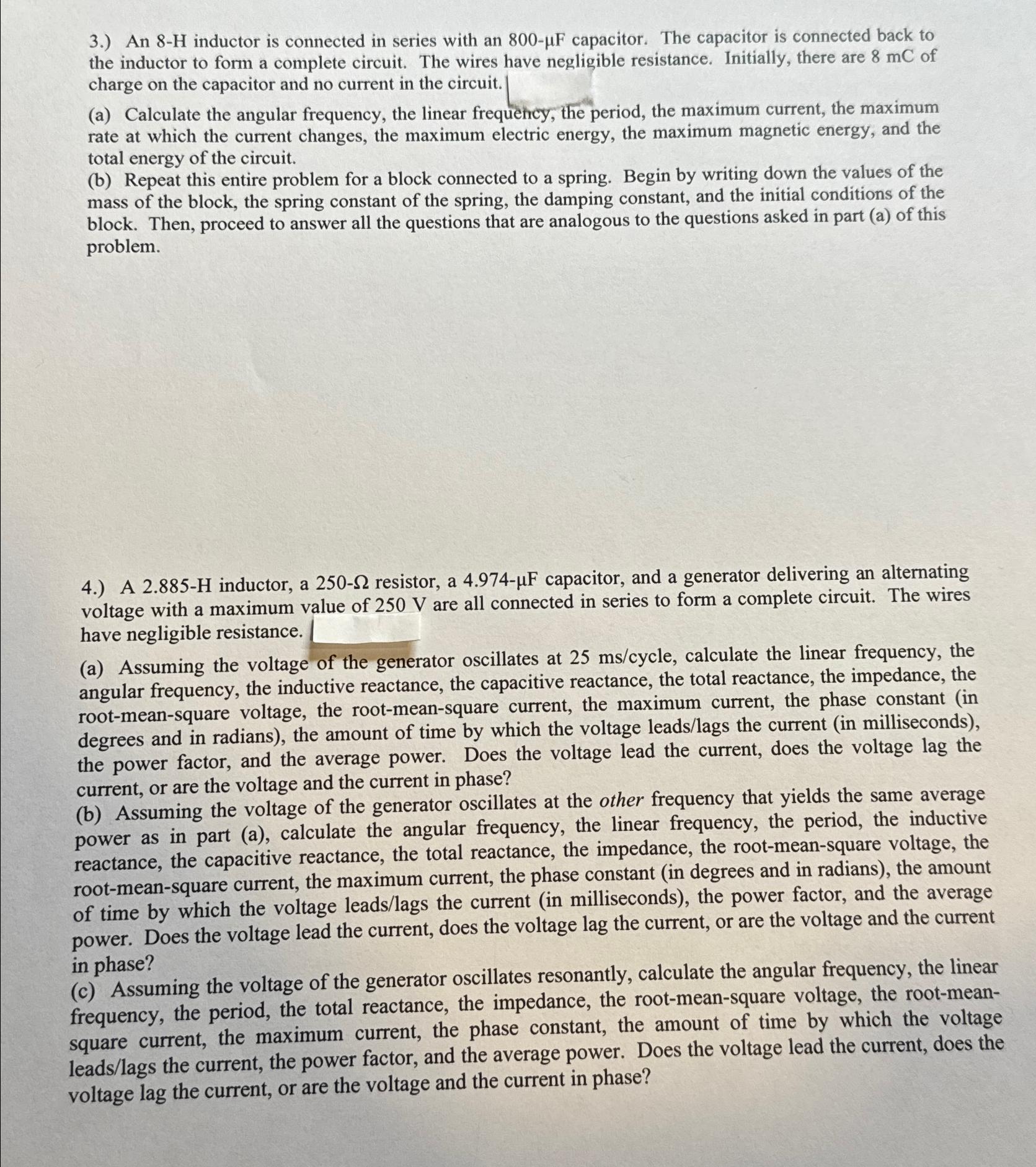Answered step by step
Verified Expert Solution
Question
1 Approved Answer
3.) An 8-H inductor is connected in series with an 800-F capacitor. The capacitor is connected back to the inductor to form a complete

3.) An 8-H inductor is connected in series with an 800-F capacitor. The capacitor is connected back to the inductor to form a complete circuit. The wires have negligible resistance. Initially, there are 8 mC of charge on the capacitor and no current in the circuit. (a) Calculate the angular frequency, the linear frequency, the period, the maximum current, the maximum rate at which the current changes, the maximum electric energy, the maximum magnetic energy, and the total energy of the circuit. (b) Repeat this entire problem for a block connected to a spring. Begin by writing down the values of the mass of the block, the spring constant of the spring, the damping constant, and the initial conditions of the block. Then, proceed to answer all the questions that are analogous to the questions asked in part (a) of this problem. 4.) A 2.885-H inductor, a 250-2 resistor, a 4.974-F capacitor, and a generator delivering an alternating voltage with a maximum value of 250 V are all connected in series to form a complete circuit. The wires have negligible resistance. (a) Assuming the voltage of the generator oscillates at 25 ms/cycle, calculate the linear frequency, the angular frequency, the inductive reactance, the capacitive reactance, the total reactance, the impedance, the root-mean-square voltage, the root-mean-square current, the maximum current, the phase constant (in degrees and in radians), the amount of time by which the voltage leads/lags the current (in milliseconds), the power factor, and the average power. Does the voltage lead the current, does the voltage lag the current, or are the voltage and the current in phase? (b) Assuming the voltage of the generator oscillates at the other frequency that yields the same average power as in part (a), calculate the angular frequency, the linear frequency, the period, the inductive reactance, the capacitive reactance, the total reactance, the impedance, the root-mean-square voltage, the root-mean-square current, the maximum current, the phase constant (in degrees and in radians), the amount of time by which the voltage leads/lags the current (in milliseconds), the power factor, and the average power. Does the voltage lead the current, does the voltage lag the current, or are the voltage and the current in phase? (c) Assuming the voltage of the generator oscillates resonantly, calculate the angular frequency, the linear frequency, the period, the total reactance, the impedance, the root-mean-square voltage, the root-mean- square current, the maximum current, the phase constant, the amount of time by which the voltage leads/lags the current, the power factor, and the average power. Does the voltage lead the current, does the voltage lag the current, or are the voltage and the current in phase?
Step by Step Solution
There are 3 Steps involved in it
Step: 1
The skin friction coefficient Cf for a laminar boundary ...
Get Instant Access to Expert-Tailored Solutions
See step-by-step solutions with expert insights and AI powered tools for academic success
Step: 2

Step: 3

Ace Your Homework with AI
Get the answers you need in no time with our AI-driven, step-by-step assistance
Get Started


